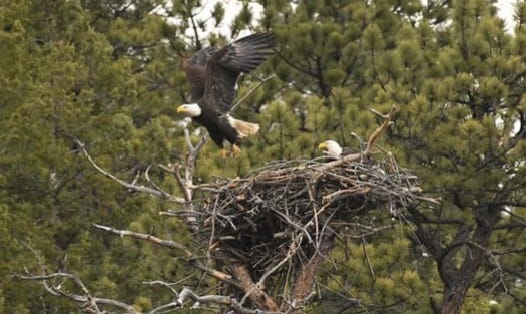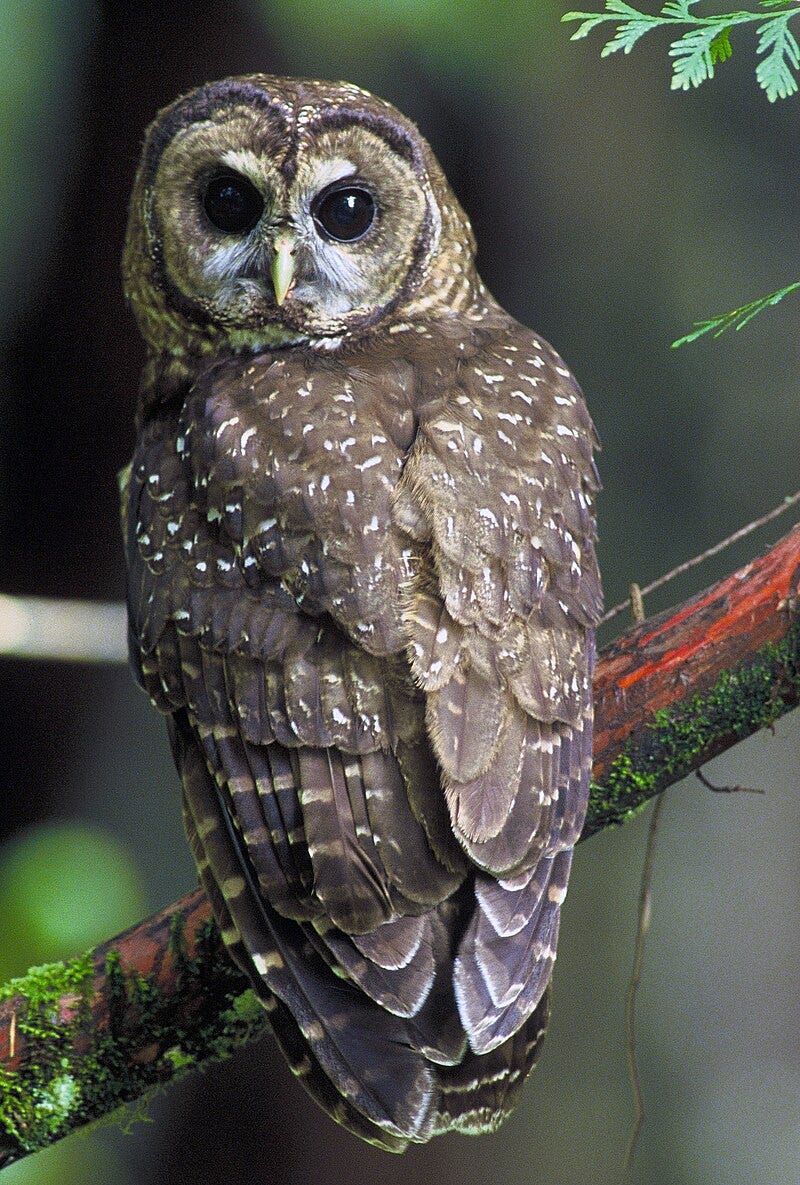On this chilly November morning, I find myself staring out the window of my home office thinking about birds’ nests. Just beyond our precious wooded acre I can see cars, bright bursts of color, whiz by through a small opening between branches. A busy thoroughfare, cutting through land now carved beyond recognition, borders our neighborhood.
These days, on our nightly dog walks we can see the lights of a gas station and a Neighborhood Walmart where once we saw only trees. Acres and acres of pines, hickories, and oaks, home to hundreds of nesting birds, providing food for pollinators, sources of oxygen and leaves for leaf litter creating loamy, rich soil, cover for critters, and home to snakes, possums, turtles, raccoons, lightning bug larvae, spiders, and so many countless other creatures, came crashing down within the last few years. Pardon all those commas, but it’s a lot of lost life.
At least it’s on a commercial thoroughfare, right? Much to my horror, even our neighborhood isn’t safe from clear cuts. Now there’s a little collection of matchy-matchy houses between us and the lights of the Walmart gas station. More destroyed habitat. More dead birds.
There is only one thing between our biodiversity and a nation of matchy-matchy houses and the blinking lights of gas stations: environmental regulations.
Regulations work, when enacted. Bald eagles are one of the Endangered Species Act’s great survival stories. While no longer listed as endangered (they are now enjoying the Least Concern status), eagles are still protected by the Bald and Golden Eagle Protection Act and the Migratory Bird Treaty Act. It remains illegal to kill, sell, or harm these birds or their nests or eggs.
I spent valuable hours of my life crawling around creeks with my father searching for protected critters in places sited for development. We found them, too. I’m certain there was a roar of celebration from fat-cat developers when my father, champion of the environment and political rabble-rouser, passed on to the great river in the sky. I was stunned to learn this week that the US Fish and Wildlife Service, responsible for issuing permits for the destruction of eagles’ nests, allows developers to self-report the activity in the nests they plan to destroy.
Obviously, there’s a flaw in the system.
R. Scot Duncan, author of Southern Wonder: Alabama’s Surprising Biodiversity, concludes in the same book, “We have the scientific know-how to end extinctions, minimize habitat loss, curtail pollution, and mitigate climate change. The barriers to fixing these problems are not scientific, they are political and economic. This means that saving biodiversity is a choice.”
Here is a hard truth. The last Trump administration rolled back over 100 environmental rules, 16 directly affecting animals, including removing fines from businesses who “accidentally” kill migratory birds.
The Trump administration removed protection of three million acres of critical habitat for the northern spotted owl in the Northwest. They tinkered and toyed with the Endangered Species Act in multiple ways, all resulting in fewer protections for threatened critters. They overturned a ban on lead ammunition and fishing tackle on federal lands (lead is the second leading cause of death in bald eagles, with habitat destruction being the first). I could go on. And on. And on.
The Biden administration was able to roll back some of these atrocities against our environment, but Trump is fired up to flex against these rollbacks.
Lee Zeldin, Trump’s pick for our Environmental Protection Agency administrator, has a history of voting against key environmental bills, a mere 14% of favorable votes according to the League of Conservation Voters. “Zeldin will ensure fair and swift deregulatory decisions that will be enacted in a way to unleash the power of American business,” Trump boasts. I’m sure the Hughston Homeses of the world are chomping at the bit for 2025 to arrive.
Trump’s pick for energy secretary, Chris Wright, is outspoken in his climate crisis denial. “Chris will be a key leader, driving innovation, cutting red tape,” Trump says. Alas, red tape is exactly what protects bald eagles and other animals, as well as our air and water.
I know that most Americans who voted in this red wave did NOT go to the polls with the intention to enact devastating consequences to wildlife, including birds like our own Jim and Pam, yet this is where we are.
Let’s end on a note of hope. We the people have the power to hold our elected officials accountable, from neighborhood HOA leaders to the President of the United States. It’s too late for Jim and Pam, yet I hope their displacement is a clarion call to the public to keep watch on our elected officials and the weakening of environmental regulations.
Godspeed to stronger protections for animals like our local bald eagles who could not find sanctuary in this War Eagle town.






Guess we're going to have to change the battle cry at the university from "War Eagle" to "Build Houses." If the dastardly Hughston Homes thing showed up in a novel, the novel would be derided for having a ridiculously unlikely premise and plot. There's no way to wrap one's mind around how an active bald eagle's nest in Auburn, Alabama, would be allowed to be destroyed.